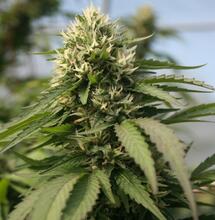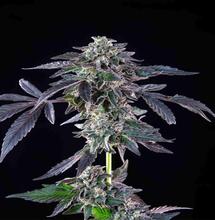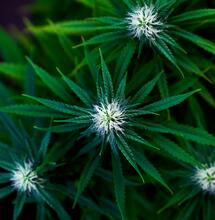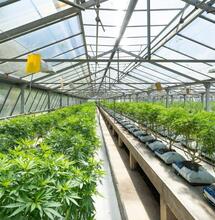Nitrogen and Phosphorous Deficiencies in Cannabis Plants
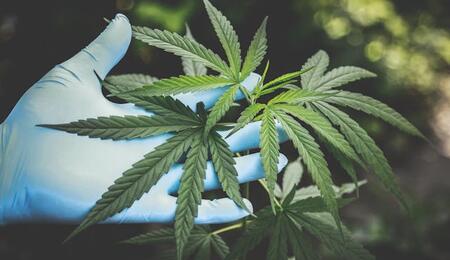
Cannabis plants are hardy, but health and vigour can be negatively affected if they are denied essential nutrients. If not corrected, it can stunt plant growth or worse kill your crop. Nutrient deficiencies can be hard to identify, but here is a basic list of what to look out for and how to fix 2 of the most common deficiencies.
While not a definitive list, here are some of the most common growing problems and how you may be able to identify them via your cannabis leaves.
Yellow leaves: A possible sign of any deficiency or light burn
Leaves curling upward: Possibly a potassium deficiency, or a result of overwatering
Brown leaves: This could signal phosphorus, potassium, magnesium, sulphur, and manganese deficiency. It could also be nutrient burn if the colouring: more solid brown, or heat stress if the browning is just on the edges.
Leaves droop: Potentially a sign of overwatering
Leaves curl downwards: Possibly potassium or phosphorus deficiency, or a result of overwatering
What Does a Nitrogen Deficiency Look Like?
Nitrogen deficiency is probably the most common cannabis deficiency. It’s pretty easy to notice and correct a Nitrogen as soon as it becomes apparent, although it shares a basic resemblance to several other deficiencies in the early stages.
In the early stages of nitrogen deficiency, leaves can appear extremely light in colour, yellowish-green—compared to the preferred deep green that you see in healthy leaves.
Nitrogen-deficient leaves will also have noticeably darker veins in contrast to the very light colour of the leaf tissue itself, however, the contrast is not as noticeable as in some other deficiencies.
At the opposite end of the spectrum, however, nitrogen toxicity results in the leaves taking on a very dark green colour that can appear almost black in the most extreme cases.
In extreme cases of nitrogen deficiency, the leaves seem to get lighter and lighter in colour ultimately drying out and dying. The bigger leaves on the lower and outer parts of the plant are often the first to be impacted and the first to die. In later stages of nitrogen deficiency; lower leaves have begun to drop off, and the upper leaves will appear to be pale yellow
How do I Fix a Nitrogen Deficiency?
If nitrogen deficiency becomes evident in the later stages of flowering, it doesn’t need to be rectified. It’s a natural process for the older leaves to fall off and die at this stage as they are no longer needed by the plant.
However, a nitrogen deficiency that takes hold in the vegetative or early flower stage can harshly impact your overall yield and quality, as it will reduce the plant’s ability to perform photosynthesis. Nitrogen deficiency can typically be repaired simply by boosting the strength of your normal NPK-based feed, but if any fine-tuning is required then nitrogen-only additives are not difficult to source.
Phosphorus Deficiency
If a Phosphorus deficiency affects plants in the vegetative stage, it can stunt growth rates creating small leaves, weak roots, and plants that are generally less robust and lacking in vitality. In the early stages of a phosphorus deficiency leaves may appear dark but washed-out. they may also have very dark veins contrasted with lighter leaf tissue.
As it advances, purplish discolourations will begin to emerge on the major part of the leaves and the leaf edges will begin to turn brown and curl downwards. The small stalk attaching the leaf to the main stem may also begin to turn a purplish colour. In the last stages, large sections of the leaves will become purplish-brown and begin to die off, while the remaining areas will turn a dappled yellowish-green.
Like Nitrogen deficiency, phosphorus deficiencies typically affect the outer and lower leaves first. Unlike nitrogen deficiency, however, phosphorus deficiency at any point of the growth cycle is always cause for concern, as the plants persist in needing high levels of phosphorus throughout the flowering period.
How to Fix a Phosphorus Deficiency
There are a few ways to fix a phosphorus deficiency. Its important however to take it slow as if you overuse any treatment your plant could end up locking out other nutrients and end up in a worse state than it was before.
Here are a few methods for correcting it:
Temperature – Keep the temperature above 15 degrees Celsius, as colder temperatures cannabis plants find it hard to absorb phosphorus at lower temperatures.
Water correctly – Ensure plants are watered correctly. Too much water or overpacked soil can easily lead to a phosphorus deficiency.
pH Products – Use pH up or pH down to guarantee the roots have the correct pH level. It should be between 6 and 7.
Add Sources of Phosphorous – Add sources such as fish meal, warm casting, soft rock phosphate and crab shell to the soil. Alternatively, use a good organic fertiliser that automatically guarantees balanced soil.
Once corrected, new leaves shouldn’t show the discolouring signs of phosphorus deficiency. Be mindful that old leaves will likely not be able to recover and that’s perfectly normal. These can be removed from the plant before treatment.
More From Soft Secrets
What to Look for in a Grow Tent
Monster Cropping your Cannabis Plants
